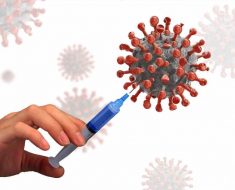They come from broken homes, from youth welfare organizations, or from the street. These are the addicted children and teenagers who seek help at Germany’s “Teen Spirit Island.” Medscape spoke to the pediatric and adolescent psychiatrist Frank M. Fischer, MD, senior physician of the Addiction and Trauma Therapy Ward at the Auf der Bult Children’s Hospital in Hanover, Germany.
Medscape : Drug-addicted children call Teen Spirit Island (TSI) their home for a set period. How do you spend Christmas with them?
Fischer: That depends on their diagnosis and familial background. For example, children from familial offender systems cannot simply travel home. And children who have no place to stay because they’ve come in off the street also have no safe space at Christmas and therefore stay here at the clinic. Some only get a visit, some also spend the night at their family of origin, unless there is any risk of danger there.
For the children who stay with us on the ward over the holidays, we prepare an amazing party with presents. There are always team members there who devote a lot of effort into making sure that the children and teenagers have a wonderful time.
Medscape : You have 18 treatment places. How do the kids get to you?
Fischer: There are teenagers who are independently able to recognize that they are addicted and that they will not manage any further without help. They visit our practices at the outpatient pediatric and adolescent psychiatry clinic and have their first consultation there. Sometimes the parents also get in touch and say, “Our child is an addict, and we cannot get through to them anymore; we cannot get close to our own child anymore.” Some come directly off of the street or are sent by youth welfare organizations.
Sometimes it becomes apparent during the conversations that the children have suicidal ideation or are psychotic. It can then sometimes become necessary due to acute child endangerment to admit these children and teenagers to the protective acute ward for crisis intervention. Such an admission often happens against the child’s wishes. On the protective ward, we then try to move that person onto voluntary therapy at TSI.
The addiction is often associated with comorbidities. We understand their use as a kind of self-medication, as a way of numbing the psychological strain affecting the kids. Typical comorbid disorders are anxiety disorders, depression, posttraumatic stress disorders, and reactive attachment disorders. The teenagers’ life stories are often characterized by violence and sexual abuse. The children use drugs to better deal with their symptoms.
Medscape : What are the main drugs the children are taking?
Fischer: Everything. There’s nothing they don’t take: cannabis, alcohol, ecstasy, amphetamine, cocaine, methylphenidate (Ritalin), tilidine, crack, painkillers, stimulants for the techno party on the weekend, and calmatives for coping with everyday life. Often taken in combination with other drugs. Heroin and crystal meth are on the rise again.
At least the kids are still young, and the addiction has not yet become chronic over many years. This means there is still a chance of going back to the source of the addiction. When did it all begin? What happened there?
Medscape : Which treatment concept are you following?
Fischer: We administer treatment in three phases in a kind of ascent model and go through the kids.
The first phase focuses on establishing a daily structure. This is because there are lots of altercations and fights. The kids join forces against the “evil” adults and go into battle. We respond to this attitude with our rules and conversations, and sometimes we have to remove individual children from the group. This is not possible without clear guidelines.
At the same time, we understand that the children’s behavior is a result of anxiety and uncertainty in their search for a bond. They’ve forgotten that adults and peers should be seen as benevolent and sympathetic. On the contrary, they have learned that attention results in abuse and beatings and that nobody should be trusted. That’s what the therapy is about, helping the kids to have a corrective bonding experience.
Then we try to also give the group a voice to describe how each individual can escape from group pressure or peer pressure, without having to endure the feeling of “betrayal.” The lesson is everyone is here for their own benefit.
In the second phase, the kids are already well integrated into a structure and know what therapy is. Family therapy or confrontive trauma therapy then takes place. The children take a look and see what’s going on. We can then initiate corrective bonding experiences. These become much more tangible in the group. The children get to work and no longer have to fight against the adults.
In the third phase, the children gain more freedom, are also able to leave Teen Spirit Island from time to time, and go to school. They do work placements and give school a try to see whether any of the skills learned in therapy can be transferred to the outside world. We have contacts in place, such as with a market garden or a top restaurant in Hanover, with other schools and training companies, who all help the children to find their way back into the middle-class world. Even if they did not do so well in school, some teenagers can receive a training offer if they prove themselves in a work placement.
Medscape : It sounds as if your work is predominantly something for the children and adolescents who can reflect and who are mentally agile. What about the others?
Fischer: For us, the IQ intelligence test is not important. But the ability for introspection is, as is emotional intelligence. The children concerned have astonishing abilities in this respect because they already have so much life experience! They have to mature and have experienced much more than their peers.
Children with low intelligence also come to us if they have the ability for introspection and emotional intuition. They then cope very well with us. We want to give everyone a chance, if it’s possible. The question is always how much psychological strain there has been and whether the children really want to escape the suffering.
Medscape : How long does it take to get in and then out?
Fischer: Our inpatient therapy lasts 6 months on average. But there are sometimes therapy disruptions and resumptions. Part of this process includes relapses and late inspections. We also offer follow-up treatment after discharge.
Medscape : How many children drop out in the middle of the process and why?
Fischer: Around 10%-15% drop out in the course of therapy. However, many of them come back again via our addiction practice. Some kids need around three attempts before they know what they want.
Therapy is usually discontinued due to autonomy conflicts, which generate a high level of ambivalence. Many have the feeling that they felt “obliged” to accept the therapy and did not make the decision independently. They drop out and then come back feeling like it’s really their own decision now to go into therapy and make it through.
Medscape : What does your evaluation say about the further development of the children? How many make it through?
Fischer: We have verified this through studies. One result is that 80% of the teenagers used stimulants in a controlled manner 1 year after the end of therapy. I am happy when I see what becomes of the children. We see this in the follow-up group therapy, in which the teenagers receive help in case of relapses for 1 or 2 years after the end of therapy and remember what they learned at TSI.
Medscape : What do you think about the legalization of cannabis for ages 18 and up?
Fischer: That’s a difficult question. I understand the political concerns around wanting to decriminalize tetrahydrocannabinol (THC) consumption. However, as a physician I must point out that the brain has not yet fully matured at 18 years old, and cannabis has a clearly damaging influence on synaptic development here.
Therefore, I would say: If you want to take the side effects of cannabis seriously, THC should be consistently legalized from 25 years old. Of course, that is legally difficult, but it corresponds to the brain’s “true” adulthood.
This article was translated from the Medscape German edition.
Source: Read Full Article





